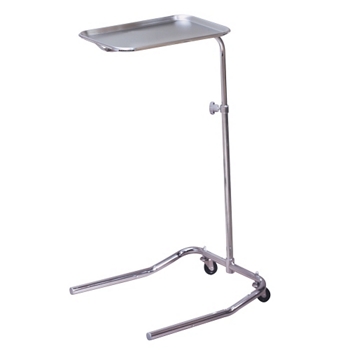When someone studies towards orthopedics or other surgical techniques, they often learn about the technical elements thereof, but not about the history of the profession itself. There are advantages to look back into history, however. It is interesting, and it is also a way of honoring those who helped to develop our crafts, arts, and sciences. By learning from them, we can repeat their successes and ensure that these never get lost, passing this information on to the next generation of students. It is unlikely that you will have learned much about the history of Mayo stands, for instance, but it is actually a really interesting subject.
All inventions have been made by people, people with interesting personalities. They had creative minds, and they were innovative thinkers. By remembering this, we keep this alive, and we become inspired while at the same time inspiring the next generations. Let’s take a look, therefore, at the origins of some of the most popular eponymous equipment and tools that are still used by orthopedists today. As a side note, a lot of the eponyms that orthopedists use today have been created by laypersons, soldiers, a Wild West vigilante, and a grave robber. Interested yet?
Mayo Stands and Gurneys
The Mayo stand was developed by Father William W. Mayo and his sons William J. Mayo and Charles H. Mayo, founders of the Mayo clinic. The stand is the symbol of the May tradition, which is that it was developed in order to improve the lives of students. While William and Charles would have crowded surgical suites with operative students looking on, the ceilings were fitted with mirrors. They developed a mobile instrument stand on one leg, so that the surgical arena could be accommodated despite having limited space.
The family was responsible for one of the earliest graduate training programs in medicine in the US, and Charles Mayo himself wanted to create something in which talents and moods were shared as standard. This vision is what made the Mayo Clinic so successful.
It isn’t clear whether it was one of the specific Mayos who actually developed the stand. This is because both brothers always said that no work they did could have been possible with the other. Dr. Will and Dr. Charles were so close that some said that if one would be elected President of the country, they would accept it in the name of the other.
The gurney, meanwhile, was developed either by Sir Goldsworthy Gurney, or by J. Theodore Gurney. Again, it isn’t clear which one of the two it is. Sir Gurney was a surgeon from England and he invented many different things, including a steam powered car. This was used to shuttle passengers between different towns, at a price. As such, he may have invented the first taxi. Some believe that, because the gurney we know today, is a rolling medical bed, he must have invented it, as it is so similar to the theory behind his car.
Theodore Gurney, meanwhile, was an inventor from this country and he created a horse drawn carriage towards the end of the 19th century. This is equally similar to the medical equipment used today.
Which one of the two inspired the medical gurney is perhaps irrelevant, since neither two actually invented it.













